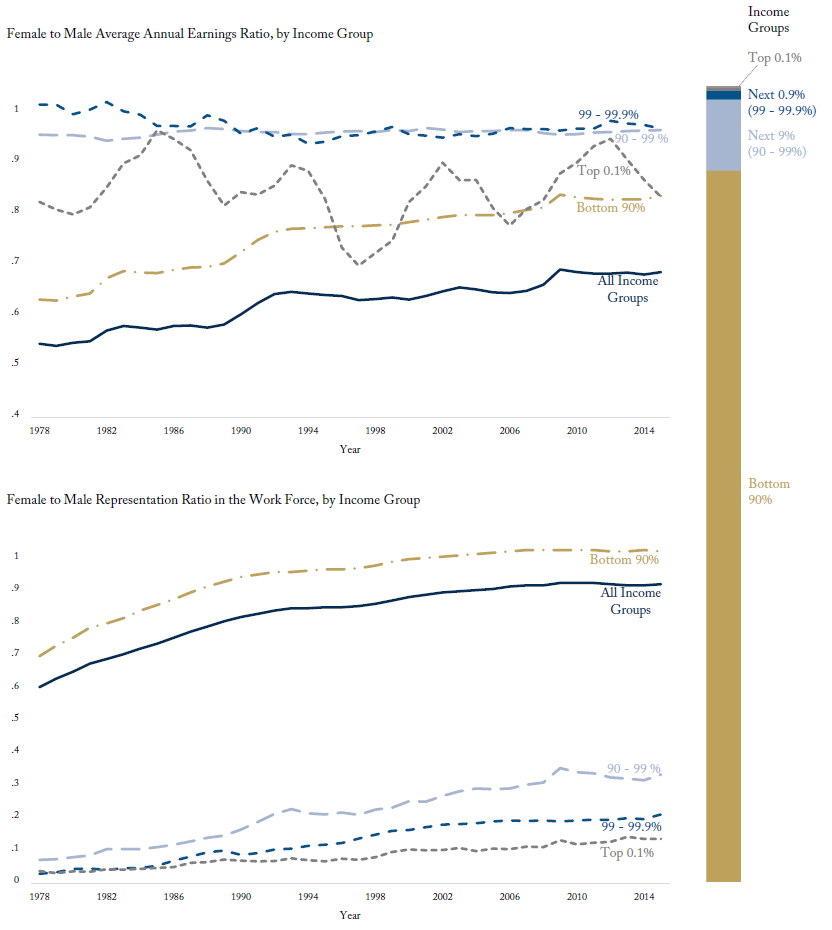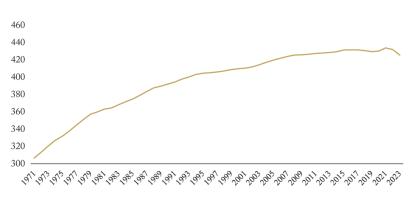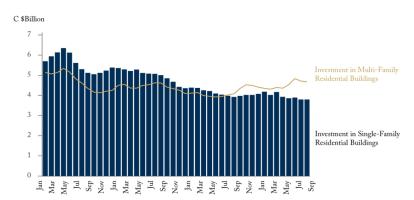Over the past half-century in Canada, there have been sizeable improvements in female representation in the labour market – among the top 9% of earners, the share of women increased more than threefold.
However, as this edition of Graphic Intelligence shows, there has been little improvement since 2008 in both the gender earnings ratio – women’s average annual earnings as a percentage of men’s average annual earnings – and the representation ratio – the number of women for each man in a given income group.
We can partially explain the overall stall by the continuing lack of females in the highest income levels and a rising share of total income going to the top 10% of earners. Bonikowska, Drolet, Fortin find that 85% of the gender earnings gap comes from the top 10% of earners. Despite the earnings ratio being closer to equality in the top 10% of the income distribution than the bottom 90%, the lack of female representation in the top 10% significantly affects total pay parity. Since 2000, the gender earnings ratio has been 15 points higher in the bottom 90% than for all earners.
To date, policies have focused on removing gender inequalities by emphasizing pay equity/comparable worth across predominantly female and male occupations for jobs of equal value. The persistent earnings inequality implies that such policies will be ineffective at narrowing the gender earnings gap further. The gap will persist until there is a better representation of women among top earners.
To learn more, read “Earnings Inequality and the Gender Pay Gap in Canada,” by Nicole Fortin and Abby Sullivan.





